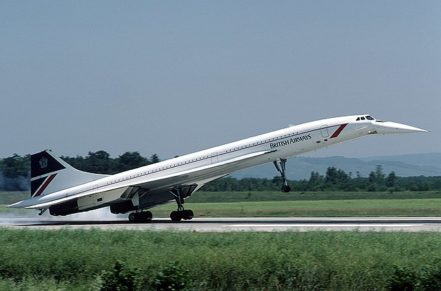
Concorde
The concept of a supersonic aeroplane was first discussed in Britain in the late 1950s. By 2003, after forty years of having the stunningly beautiful sight of Concorde in our skies, the venture was over. This is a sad case of the onward march of technology, coupled with economic and environmental realities, seeing off an iconic, never-to-be-forgotten marvel.
Concorde was a joint project between British Airways and Sud Aviation of France. Assembly began in 1963 with Britain producing 60% of the engine and 40% of the airframe. The prototype made its appearance six years later and achieved Mach-1 (the speed of sound) the same year. Some people complained about the ‘sonic boom’ which could be heard from the ground.
Concorde was actually capable of flying at Mach-2 and inevitably broke speed records for crossing the Atlantic. However, it could only take one hundred passengers and the passenger-fuel ratio was very poor compared to the Boeing 747. Maintenance costs were high and sales to other countries flopped after the oil crises of the 1970s. In July 2000 a Concorde in Paris suffered a fatal crash when one of its tyres was punctured by debris. This was the final straw for the British and French governments.
(Image: Eduard Marmet at Wikimedia Commons / CC BY-SA 3.0)
